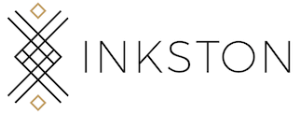Welcome › Forums › Ideas for Inspiration › Calligraphy next to painting.
Tagged: adding calligraphy, painting
- This topic has 4 replies, 3 voices, and was last updated 7 years, 8 months ago by
 罗雁 LuoYan.
罗雁 LuoYan.
-
AuthorPosts
-
-
2nd October 2017 at 8:17 pm #15210
 riekjecaresParticipant
riekjecaresParticipant- What kind of calligraphy, do you add next to the painting? A poem, name of the painting or signature? And if there is no calligraphy next to the painting only a seal is the painting than also taken seriously?
-
5th October 2017 at 5:57 am #15316
 罗雁 LuoYanKeymaster
罗雁 LuoYanKeymasterSimilar to using seals for painting, putting extra context on Chinese painting has strict regulations too. However, it is not compulsory to write calligraphy for serious painting. In Chinese, we refer this as 題款 Ti Kuan. One of the important functions of Ti Kuan is to keep the whole painting well balanced in terms of structure. If you read our article on the sue of Seals for Chinese art works, you would find Ti Kuan and seals have similar functions.
In terms of content, Ti Kuan refers to two subjects. 題 Ti refers to the poems or small articles you write on the painting. 款 Kuan includes detailed information of the painting itself. These details include when the painting is done, who did the painting (artist’s signature), artist seal, etc. Sometimes, 款 Kuan also include where the artist is from, at what age the artist did the painting, where the painting is done. If this painting is made specially as present for someone, it is a common practice to include the present recipient’s name on the painting too. The recipient’s name should also include salutation, title, and other necessary information about him.
A special note on signing date for the painting: we use Sexagenary cycle to refer to time. This Chinese system has specific names for each specific year, season, month, days, etc. I have posted the system below,
干支:
甲子 (阏逢困敦) 乙丑 (旃蒙 赤奋若) 丙寅 (柔兆 摄提格) 丁卯 (强圉 单阏)
戊辰 (箸雍 执徐) 已巳 (屠维 大荒落) 庚午 (上章 敦戕) 辛未 (重光协洽)
壬申 (玄 难) 癸酉 (昭阳 作噩) 申戌 (阏逢 阉茂) 乙亥 (旃蒙 大渊献)
丙子 (柔兆 因敦) 丁丑 (强圉 赤奋若) 戌寅 (箸雍 摄提格)己卯 (屠维 单阏)
庚辰 (上章 执徐) 辛巳 (重光 大荒落) 壬午 (玄 敦戕) 癸未 (昭阳 协洽)
甲申 (阏逢 君滩) 乙酉 (旃蒙 作疆) 丙戌(柔兆 阉茂) 丁亥 (强圉 大渊献)
戊子 (箸雍 困敦) 己丑 (屠维 赤奋若) 庚寅 (上章 摄提格) 辛卯 (重光 单阏)
壬辰 (玄 执徐) 癸巳 (昭阳大荒落) 甲午 (阏逢 敦戕) 乙未 (旃蒙 协洽)
丙申 (柔兆 君滩) 丁酉 (强圉 作噩) 戊戌 (箸雍 阉茂) 已亥 (屠维 大渊献)
庚子 (上章 困敦)辛丑 (重庄 赤奋若) 壬寅 (玄 摄提格) 葵卯 (昭阳 单阏)
甲辰 (阏逢 大荒落) 乙巳 (旃蒙 大荒落) 丙午 (柔兆 郭) 丁未 (强 协洽)
戊申(箸雍 滩) 己酉 (屠维 作噩) 庚戌 (上章 阉茂) 辛亥 (重光 大渊献)
壬子 (玄 困敦) 葵丑 (昭阳 赤奋若) 甲寅 (阏逢 摄提格) 乙卯 (旃蒙单阏)
丙辰 (柔兆 执徐) 丁巳 (强 大荒落) 戊午 (箸雍 郭 ) 己未 (屠维 协洽)
庚申 (上章 滩) 辛酉 (重光 作噩) 壬戌 (率 阉茂) 葵亥(昭阳 大渊献)
月令 :
一月:正月,孟陬,春王,陬月,孟春,肇春,端春,早春,初春,上春,初月,三正,十三月,新正,华岁,肇岁,月正,太簇,岁岁,芳岁,献岁,寅月,开岁,杨月,首阳,春阳,妆阳,三之日,泰月,征月,端月,孟阳,三微月。
二月:仲春,仲钟,大装,花进,卯月,竹秋,夹钟,丽月,杏月,甜春,四之日,令月,中春。
三月:季春,暮春,杪春,花月,辰月,姑洗, 月,桃月, 月,晚春,末春,蚕月,嘉月,桃浪,桐月,雩风,尖月,樱笋时,小清明。
四月:孟夏,初夏,首夏,槐夏,梅月,维夏,麦月,槐月,纯阴,乏月,阴月,麦侯,余月,麦秋,巳月,中吕,清和月,正阳。
五月:仲夏,恶月,郁蒸,中夏,鸣蜩,蒲月,皋月,榴月,蕤宾,午月,端阳,超夏,小刑。
六月:季夏,暮夏,杪夏,暑月,且月,林钟,精阳,伏月,季月,荷月,焦月,溽暑,组暑,未月,极暑。
七月:孟秋,新秋,首秋,兰秋,早秋,初秋,上科,初商,兰月,巧月,瓜月,瓜时,霜时,申月,相月,京月,夷则,肇秋。
八月:仲秋,挂秋,正秋,大清明,壮月,南吕,桂月,酉月,怀月,竹小春,仲商。
九月:季秋,凉秋,杪秋,穷秋,暮秋,晚秋,玄月,咏月,朽月,菊月,季白,青 ,戌月,杪商,无射,暮商,霜序,季商。
十月:孟冬,初冬,开冬,吉月,阳月,坤月,良月,亥月,正阳月,小春月,应钟,小阳春。
十一月:仲冬,中冬,子月,畅月,辜月,葭月,龙潜月,黄钟。
十二月:季冬,末冬,残冬,严冬,杪冬,穷冬,暮冬,腊冬,腊月,涂月,嘉平月,蜡月,严月,冰月, 月,丑月, 月,穷节,大吕,星回节,除月。
季令:
春:阳春,青春,三春,九春,芳春,青阳,艳阳,阳中。
夏:朱夏,三夏,九夏,昊天,长嬴,朱明。
秋:金秋,商秋,素科,三秋,九秋,素商,素节,高商,商节,金天。
冬:三冬,九冬,寒冬,安宁,玄英。
节令:
正月初一:元旦,元日,元朔,元正,元春,元辰,正朝,三朝,改旦,三元,岁朝。初七:人日。 正月十五:元霄,元夕,元夜,灯节,上元。
二月初一:中和日。
三月初三:重三,上巳,三巳,令节,上除。
四月初八:浴佛日。 四月十九:浣花天,浣花日。
五月初五:端午,午日,蒲节。
六月初六,天贶节。
七月初七:七夕,乞巧节,星节。 七月十五:中元。
八月十五:中秋节。
九月初九:重阳,重九,菊花节。
十月十五:下元。
十二月三十:除夕,宁岁。
每月初一至十称“上浣”。 每月初一称“朔”,“旦”,“额。” 每月十五称“望。” 每月十六称“既望”,“望后。” 每月末日称“晦。” 每年清明节前一至二日为“寒食节。”Wikipedia has a very detailed explanation on this Sexagenary cycle system.
https://en.wikipedia.org/wiki/Sexagenary_cycle
-
9th October 2017 at 3:55 pm #15487
 hanayamaParticipant
hanayamaParticipantJust my opinion:
Coming from a different tradition, I learned that this is very subjective – whether to add text or not really depends on the nature of the painting. Of course at a bare minimum, there is always the artist’s seal and/or name, but whether to add calligraphy in the form of a poem or dedication is connected to the intent of the painting. Also, and most importantly, we are always working with yohaku, or white space – which is part of the painting and must be in harmony with the whole. It has been said that ‘the unpainted part is the most difficult’. I believe that to be true. I have one painting that I want to add some calligraphy to, but have yet to decide on style. This one is a personal expression so my text will be in the form of a short poem.
-
17th November 2017 at 6:44 am #16866
 罗雁 LuoYanKeymaster
罗雁 LuoYanKeymaster许渊冲 Xu YuanChong has wonderful translations of ancient Chinese poems. Inkston definitely loves his translations most and would like to recommend his books to all who love Chinese arts and literature. He was also nominated for the Nobel Literature Prize.
https://www.inkston.com/shop/art-books/song-lyrics-paintings/
-
-
AuthorPosts
- You must be logged in to reply to this topic.
